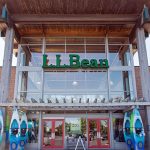Customer satisfaction with retailers at the national level inched up 0.1% to 75.8 on a scale of 0 to 100 for the fourth quarter of 2011, according to a report released by the American Customer Satisfaction Index (ACSI). The Q4 gain brings the yearly change for 2011 up to 0.7%, a mild improvement that is in sync with a very slowly recovering U.S. economy.
“The good news is that customer satisfaction continues to climb, which has a positive effect on consumer demand and growth,” says Claes Fornell, ACSI founder and author of The Satisfied Customer: Winners and Losers in the Battle for Buyer Preference. “Still, the ACSI improvement is tepid, and much of the fourth quarter gain comes from positive consumer reaction to lower gas prices. With gas prices already on the rise, customers obviously are going to be less pleased.”
The fourth quarter 2011 national score is based on January results for government-which overall was nearly stable (+0.1% to 67.0) despite a gain for federal services-along with new scores released today for retail and e-commerce. In total, 44 companies are measured within eight industries: supermarkets; department & discount stores; specialty retail stores; health & personal care (drug) stores; gasoline service stations; and Internet retail, brokerage, and travel.
Retail: Specialty Stores Improve for a Fourth Year; Small Loss for Drug Stores
Traditional retailers specializing in particular merchandise, such as home improvement, office supplies, or books and music, continue a gradual four-year climb with a gain of 1.3% to 79-the top industry score in the retail sector. Membership warehouse clubs stake out the prime territory in 2011. Costco leads with an ACSI score of 83 (+1%), followed by a substantially improved Sam’s Club at 81 (+4%). Barnes & Noble, the sole traditional bookstore chain left standing after Borders’ demise, takes an unwelcome hit in customer satisfaction-down 4% to 79 and surrendering the industry lead.
“Barnes & Noble has its work cut out for it, trying to stave off bankruptcy as the book industry struggles to redefine itself in the digital age,” remarks Fornell. “The retailer faces a formidable opponent in Amazon, a direct competitor with a cost-effective online business model and a much higher level of customer satisfaction.”
In the office supply business, customers make little distinction among the big chains. Staples and Office Depot both slip 2% to 79, while OfficeMax nearly catches them at 78, bouncing back 5% following a loss in 2010. Home Depot is on the right track according to customers after lagging rival Lowe’s for several years. Four years of steady gains bring Home Depot to an all-time ACSI high of 78 (+4% for 2011), while Lowe’s gains 3% to 79. TJX comes out of the holiday season at 78 (+3%), while Gap rises 4% to a record high of 77 that nevertheless keeps the clothing chain at the low end of the industry.
Supermarkets are up 1.3% overall to 76 despite a continued rise in food prices-now 6% higher than in 2010. Efforts to remodel stores and expand product selection seem to be paying off for this cost-sensitive industry. Publix remains the grocer to beat, continuing its customer satisfaction reign unchallenged at a stable and high score of 84. Whole Foods keeps trending upward following its first measure in 2007, although the gain for 2011 is small (+1%). The upscale grocer comes in second place at 80, showing a net gain of 10% over four years. The supermarket business of Wal-Mart does not fare well in comparison with the other chains. Dropping 3% to 69, Wal-Mart lags the supermarket field by 5 points or more and remains dead last among all measured retailers.
In the department & discount store industry, Wal-Mart treads this same ground. With a 4% satisfaction hit, the world’s largest retailer is now alone in last place at 70-6 points below the industry average and the next-lowest chain (Sears at 76).
“Wal-Mart’s relatively strong financial performance appears to be buoyed by overseas growth, while U.S. sales are mired in a two-year slump,” says Fornell. “While shoppers remain price conscious, the problem for Wal-Mart may be that the denominator in the money/value expression is seen as too weak by consumers and that competing retailers such as dollar stores or big-box specialty stores are viewed as viable alternatives offering low price in combination with more attractive product or service quality.”
The department & discount store industry overall is flat at an unchanged 76, after three prior years of slow, but steady, progress. Pricing pressure remains a challenge for the industry, but upscale Nordstrom shows that quality still counts with a leading score of 84 (+2%) that outclasses the competition by 2 points or more. J.C. Penney improves 2% to 82, capturing second place and moving just ahead of Kohl’s (unchanged at 81) for the first time since 2002.
Health & personal care stores retreat for a second year and are the only retail category to lose customer satisfaction ground in 2011. Down 1.3% to 76, drug stores tie the other categories except for specialty retail at 79 and gasoline stations at 74. But unlike other retail segments, small has a pronounced advantage when it comes to drug stores. The aggregation of smaller drug stores leads by a wide margin at 82 (+1%). Among the big three chains, Walgreen loses 3% and drops into a tie with an unchanged Rite Aid at 75. Customer satisfaction with CVS Caremark dwindles to a seven-year low of 73 (-1%), perhaps symptomatic of the company’s cost-cutting in the face of depressed sales.
Online Retail Beats Brick-and-Mortar; Internet Brokers Recede with the Market
Customer satisfaction with online retail rebounds 1.3% to 81 in 2011, making the category the clear winner compared with traditional retailers (average of 76.1 overall). While this customer satisfaction score is lower than it was two years ago, it is high enough to surpass the individual scores of most traditional retailers.
The best of the best among all retailers-traditional or online-is Amazon. Regardless of the company’s 1% slip for 2011, Amazon packs the biggest customer satisfaction punch at 86, followed by Newegg at 85 (+1%). Next in line are two websites with stable satisfaction scores: Overstock at 83 and eBay at 81. The group of all other retail websites improves 3% to 80, which places the entire industry in the 80s with the exception of one website-Netflix.
Customer satisfaction with Netflix does a predictable nosedive for 2011, crashing down 14% to 74, one of the biggest year-on-year losses in ACSI history. Netflix shed scores of customers in the fall of 2011, following price hikes and a controversial plan to move DVD-by-mail customers to a separate service. While the plan was abandoned and the company has since started adding subscribers, the toll on customer satisfaction is heavy and Netflix remains in a precarious position relative to the rest of the industry.
Internet brokerage services prove less satisfying to customers in 2011 as the category’s ACSI score falls 2.6% to 76. Overall, however, customer satisfaction follows the vagaries of the stock market.
“In 2008, the market plummeted 38% and likewise, the ACSI score for online brokerage slumped 6%,” notes Fornell. “The next two years brought double-digit market gains and recovering customer satisfaction, but weaker growth in 2011 again has left investors less pleased.”
In the brokerage arena, bigger is better, as the aggregate of all other online brokers (such as Vanguard and Scottrade) drops 4% to a last-place score of 75. The four large Internet brokers, on the other hand, show little differentiation in customer satisfaction. Charles Schwab shares the lead with Fidelity and E*Trade-all deadlocked at 79. A single point separates TD Ameritrade at 78 from the leading trio. While three of the four brokers remain within 1% of their 2010 scores, the outlook is upbeat for E*Trade, which gains 4% for 2011, catching the leaders.
Internet travel websites overall keep satisfaction stable at 78. Travelocity rises to the top of the category with a 3% gain to 79 that places it in a tie with the aggregate of all smaller travel sites. Conversely, Expedia loses 3% and the industry lead at 77. Orbitz (+1%) and Priceline (+4%) round out the industry at 76. The gain for Priceline erases a loss in 2010. The website has been moving away from its “name your own price” approach to a more conventional travel services model, which may be resonating positively with customers.
About ACSI
The American Customer Satisfaction Index is a national economic indicator of customer evaluations of the quality of products and services available to household consumers in the United States. Data from interviews with approximately 70,000 customers annually are used as inputs into an econometric model to measure satisfaction with more than 225 companies in 47 industries and 10 economic sectors, along with over 200 services, programs, and websites of approximately 130 federal government agencies.
ACSI results are released on a monthly basis, with all measures reported using a scale of 0 to 100. ACSI data have proven to be strongly related to a number of essential indicators of micro and macroeconomic performance. For example, firms with higher levels of customer satisfaction tend to have higher earnings and stock returns relative to competitors. Stock portfolios based on companies that show strong performance in ACSI deliver excess returns in up markets as well as down markets. And, at the macro level, customer satisfaction has been shown to be predictive of both consumer spending and gross domestic product growth.
The Index was founded at the University of Michigan’s Ross School of Business and is produced by ACSI LLC.















